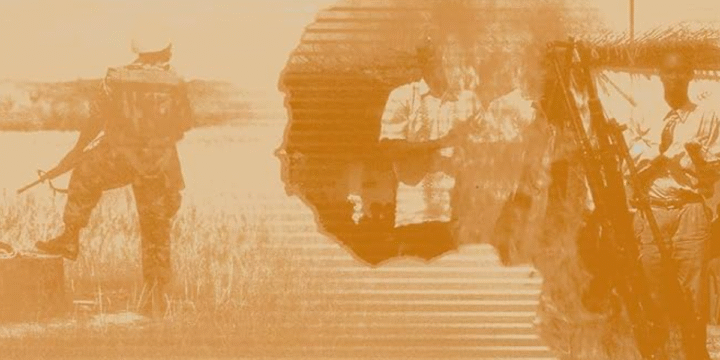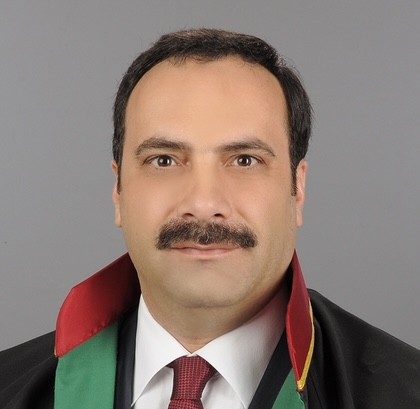
Transnational organised crime continues to pose a formidable and evolving challenge across the Asia-Pacific region. While it is far from a novel concern, the post–Cold War era has witnessed an intensification of criminal activities, fuelled by accelerating globalisation, porous borders, digital technologies, and weak regulatory mechanisms in certain jurisdictions. The illicit trade in narcotics, arms, people, and wildlife has grown into a complex web of networks that transcend national boundaries. These criminal structures often overlap with insurgent, terrorist, or extremist movements, turning regions of political unrest into thriving grounds for profit-driven violence. Against this backdrop, groups such as the Abu Sayyaf Group (ASG) in the southern Philippines illustrate how local insurgencies can transform into nodes within transnational criminal enterprises. Yet, ASG is but one example of a wider regional pattern, and effective responses demand a panoramic view of regional dynamics, cooperation, and emerging threats.
The Asia-Pacific region, particularly Southeast Asia, has emerged as both a hub and a battleground for transnational organised crime. As countries such as Indonesia, Malaysia, the Philippines, and Thailand grapple with cross-border criminality, the urgency of cooperative frameworks has become undeniable. Meanwhile, broader geopolitical developments — such as the tightening diplomatic coordination between China, South Korea, and Japan, and rising tensions between nuclear-armed states like India and Pakistan — create a fluid security environment where criminal networks can thrive. In this context, a nuanced understanding of regional partnerships, deterrence mechanisms, and collective security goals is essential.
Transnational Organised Crime in the Asia-Pacific
Criminal networks operating across the Asia-Pacific engage in a broad array of illicit activities including human trafficking, cybercrime, counterfeit production, arms smuggling, and drug trafficking. The region’s dense maritime geography, combined with its socio-economic disparities and varying levels of law enforcement capacity, make it particularly vulnerable. Southeast Asia, especially the Golden Triangle area — encompassing parts of Myanmar, Laos, and Thailand — remains a notorious hub for methamphetamine production, with trafficking routes extending through Cambodia, Vietnam, and beyond.
These networks are not merely opportunistic. They demonstrate strategic coordination, sophisticated financial laundering operations, and links to global syndicates. The illicit economy undermines legitimate governance, distorts markets, and disproportionately harms vulnerable populations. It also contributes to environmental degradation through illegal fishing, logging, and wildlife trade. Addressing such issues requires coordinated policy efforts, technological capability-building, and strong legal frameworks shared among states. Increasingly, criminal groups are exploiting digital platforms, cryptocurrencies, and encrypted communication tools to traffic narcotics, launder money, and manage transnational logistics with minimal detection. The rise of online fraud syndicates targeting foreign workers and small businesses further highlights the need for cybercrime integration in regional strategies.
One example, The Abu Sayyaf Group, active primarily in Mindanao and the Sulu Archipelago, originated in the early 1990s as a separatist movement seeking autonomy for the Muslim population in the southern Philippines. Over time, however, the group mutated into a hybrid actor blending ideological claims with violent criminality — including kidnapping for ransom, bombings, arms smuggling, and human trafficking.
While the ASG has drawn attention due to its brutality and links to international jihadist organisations, its evolution is indicative of how weak state presence, poverty, and porous borders can nurture transnational crime. The group’s operations often involve cross-border movements between the Philippines, Malaysia, and Indonesia, defying conventional counter-terrorism measures. Nevertheless, it is only one of many such groups and must be viewed within a broader matrix of regional criminal threats.
One concrete success story illustrating regional cooperation was the 2019 joint operation by Malaysian and Philippine forces to rescue Indonesian hostages taken by ASG. This incident exemplifies a broader shift in Southeast Asia towards institutionalised regional collaboration, most notably under ASEAN’s evolving security frameworks
ASEAN and Southeast Asian Security Cooperation
ASEAN has steadily strengthened its regional security agenda, particularly through maritime security initiatives and cross-border law enforcement cooperation. Efforts such as the Trilateral Maritime Patrols (TMP), involving Indonesia, Malaysia, and the Philippines, represent a concrete example of targeted regional coordination. These patrols have significantly curtailed the maritime mobility of groups like ASG and improved maritime domain awareness.
ASEAN’s frameworks for intelligence-sharing and joint capacity-building — such as the ASEAN Ministerial Meeting on Transnational Crime (AMMTC) and ASEANAPOL — have provided institutional foundations for deeper cooperation. There is growing momentum for harmonising legal tools, including extradition treaties and mutual legal assistance mechanisms. In addition, the ASEAN Cybersecurity Cooperation Strategy seeks to protect regional infrastructure against criminal cyber networks and digital threats.
Nevertheless, differing political priorities and capacities among member states continue to present hurdles. Technological initiatives, such as digital forensics training and blockchain tracing of illicit financial flows, are emerging areas of shared interest. Moreover, civil society organisations and non-governmental bodies are increasingly being involved in prevention, rehabilitation, and victim support programs. In Thailand, NGOs have collaborated with border police to support victims of trafficking, while community-led awareness campaigns in the Philippines have reduced recruitment into criminal networks.
The Role of Regional Powers: China, South Korea, and Japan
While ASEAN-led efforts remain central to subregional cooperation, engagement by Northeast Asian powers has also played a pivotal role in strengthening regional security architecture. Recent years have seen a noticeable improvement in trilateral relations between China, South Korea, and Japan. Despite historical and territorial frictions, all three have recognised the value of strategic cooperation — particularly in areas of maritime security, cybercrime, and anti-piracy operations. China has invested heavily in port infrastructure and coastal surveillance technologies under the Belt and Road Initiative, which have secondary benefits for monitoring illicit maritime activities.
Japan and South Korea, meanwhile, have supported capacity-building programs across ASEAN, offering training, humanitarian assistance, and logistical aid. Their coast guard collaborations with the Philippines, Vietnam, and Indonesia reflect a broader commitment to regional stability.
Importantly, trilateral dialogues now include crime prevention, emergency response coordination, and information sharing on emerging transnational threats such as online radicalisation, digital black markets, and cryptocurrency-facilitated trafficking. These cooperative initiatives are increasingly being formalised into joint working groups and strategic task forces.
However, the Asia-Pacific’s security landscape cannot be fully understood without accounting for the escalating tensions on its western flank — particularly between India and Pakistan. While Southeast Asia grapples with transnational crime through cooperative frameworks, other parts of Asia face growing conventional threats. The long-standing rivalry between India and Pakistan, both nuclear-armed, remains volatile. Cross-border militancy, political instability, and military posturing have repeatedly escalated into near-conflict scenarios.
Such instability risks spilling over into broader regional insecurity. It can foster illicit arms trade, radicalisation, and the displacement of vulnerable populations — all of which may feed into criminal economies across Asia. As the strategic spotlight shifts eastward, this calls for renewed attention to preventive diplomacy and confidence-building measures not just in South Asia, but also in adjacent Southeast Asian regions.
Human Security and Civilian Harm
Beyond geopolitical and military considerations, the impact of transnational crime is most acutely felt at the human level — where lives are disrupted and communities destabilised. Transnational organised crime is not only a state security issue; it is a human security crisis. Victims of human trafficking, communities displaced by criminal violence, and those affected by environmental crimes all experience long-term harm. Kidnapping, sexual exploitation, and forced labour are widespread across several border areas.
Moreover, when criminality intersects with insurgency — as seen in parts of Myanmar or the Philippines — civilians often bear the brunt. Economic deprivation, loss of infrastructure, and psychological trauma further entrench social divisions and weaken the legitimacy of the state. Thus, a holistic approach must integrate human rights, developmental aid, and trauma-informed governance. Victim rehabilitation centres in Cambodia, survivor-focused advocacy in Malaysia, and grassroots reporting initiatives in Indonesia offer promising models for integrating community voices into broader regional policies.
Conclusion
The Asia-Pacific is undergoing a complex security transition. Transnational organised crime, once viewed as peripheral to state-centric security concerns, has emerged as a key destabilising force. The Abu Sayyaf Group is one case among many that illustrates how insurgency, crime, and weak governance converge to threaten both national integrity and regional stability.
Yet the region also offers pathways forward. ASEAN-led cooperation, supported by the strategic engagement of China, Japan, and South Korea, provides an evolving platform for collective resilience. In an increasingly interconnected world, responses to non-traditional threats must be multidimensional — involving not only military and law enforcement tools but also diplomacy, regional solidarity, and inclusive development strategies. A secure Asia-Pacific hinges not only on deterring crime but on fostering trust, justice, and opportunity across its diverse societies. The future of regional security depends not only on curbing criminality, but also on strengthening a shared regional identity rooted in mutual respect, transparency, and integrated governance.
References
Abuza, Z. (2005). Balik-Terrorism: The Return of Abu Sayyaf. Strategic Studies Institute, US Army War College.
ASEANAPOL. (2023). ASEANAPOL Annual Report. Retrieved from https://www.aseanapol.org
Banlaoi, R. C. (2006). “The Abu Sayyaf Group: From Mere Banditry to Genuine Terrorism.” Southeast Asian Affairs, pp. 247–262.
Fabe, A. (2013). “The Cost of Terrorism: Bombings by the Abu Sayyaf Group in the Philippines.” Philippine Sociological Review, 61(1), 85–107.
Filler, A. L. (2002). “The Abu Sayyaf Group: A Growing Menace to Civil Society.” Terrorism and Political Violence, 14(4), 93–108.
McNally, C. A., & Morrison, C. E. (2002). Asia Pacific Security Outlook 2002. Brookings Institution Press.
UNODC. (2013). Transnational Organized Crime in East Asia and the Pacific: A Threat Assessment. United Nations.
UNODC. (2021). Southeast Asia Opium Survey 2021: Lao PDR, Myanmar, and Thailand. Retrieved from https://www.unodc.org
Yoshikawa, A. (2022). “Japan and ASEAN: Maritime Security Engagement in the Indo-Pacific.” East Asia Forum Quarterly, 14(2), 35–39.
Zhao, H. (2023). “China’s Belt and Road Security Implications in Southeast Asia.” Journal of Asian Security and International Affairs, 10(1), 64–83.

